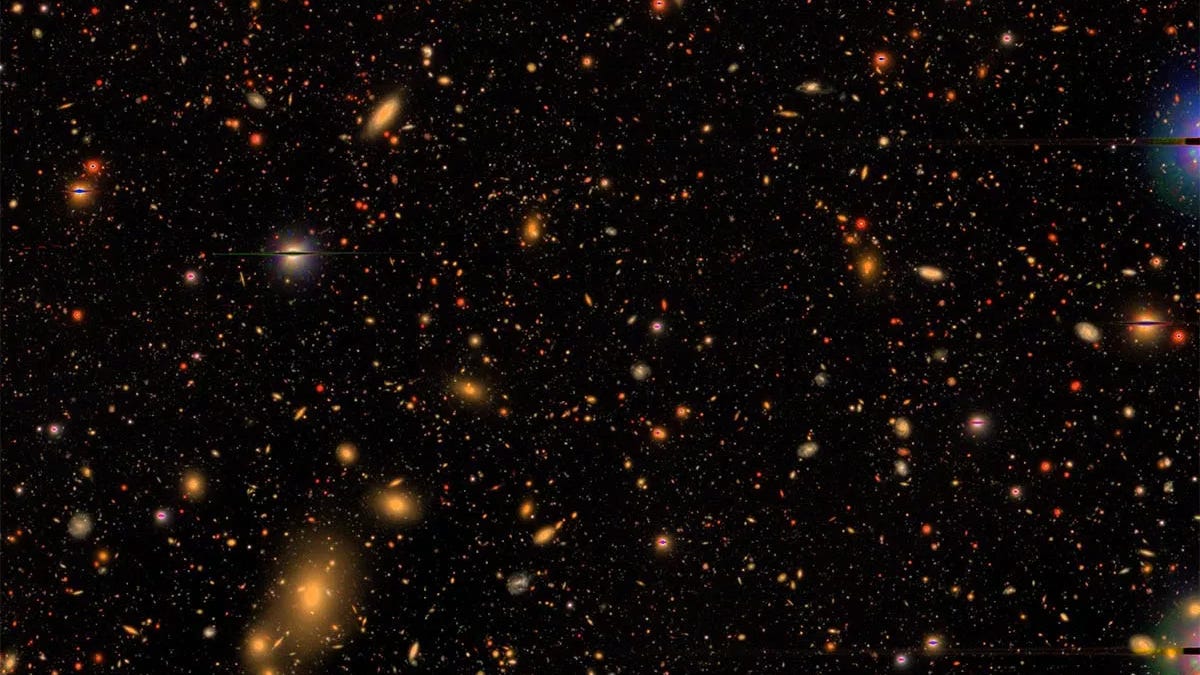Space is spectacular in a new deep field
A new deep field survey of the sky has released its first images and data, and is poised to unlock an "unprecedented" view into space.
A project using one of the world's largest telescopes is well on its way to helping unlock the secrets of the skies.
Using the Subaru Telescope's Hyper Suprime-Cam at the Mauna Kea Observatories in Hawaii, a team from the Hyper Suprime-Cam Subaru Strategic Program has just released its first images and data, collected over the project's first 18 months.
For a combined 61.5 nights of observations, the Hyper Suprime-Cam fixed its gaze on a 108-square-degree section of the sky, capturing light from when the universe was less than 10 percent of its current age.
"Since 2014, we have been observing the sky with HSC, which can capture a wide-field image with high resolution," said Satoshi Miyazaki, the leader of the project and a scientist at the National Astronomical Observatory of Japan.
"We believe the data release will lead to many exciting astronomical results, from exploring the nature of dark matter and dark energy, as well as asteroids in our own solar system and galaxies in the early universe. The team members are now preparing a number of scientific papers based on these data."
The telescope hasn't reached as far as the famous Hubble Ultra-Deep Field, but that's not the intention of the survey, said Michael Strauss of Princeton University's Department of Astrophysical Sciences.
"We're going almost as deep, and can't match Hubble's exquisite resolution. But we gain by covering much more sky," he explained in an email.
"The Hubble Ultra-Deep field covers a few square arcminutes. The data we just released covers over 100 square degrees (and there are 3,600 square arcminutes in a single square degree). The largest single survey done with Hubble (the so-called COSMOS survey) covers 2 square degrees, and does not go as deep as our images."
A massive galaxy cluster in the Virgo constellation. In the centre, you can see a number of strong gravitational lenses.
The survey has three layers, Wide, Deep and UltraDeep. The Wide survey will cover 1,400 square degrees, or an area equal to around 7,000 full moons. The Deep survey will cover 26 square degrees, and the UltraDeep survey will cover 3.5 square degrees.
These will help the team study the evolution of galaxies, search for quasars and map the far reaches of the Milky Way Galaxy, Strauss said.
"With such data, we can explore the distorting effects of dark matter on the shapes of galaxies, through a phenomenon called gravitational lensing," he added. "People have done this before, but with our wide area, we can do so with far greater precision."
These images, released to the scientific community worldwide, are just the first of a project that will span 300 nights of observations over a period of five to six years.
Solving for XX: The industry seeks to overcome outdated ideas about "women in tech."
Special Reports: All of CNET's most in-depth features in one easy spot.


